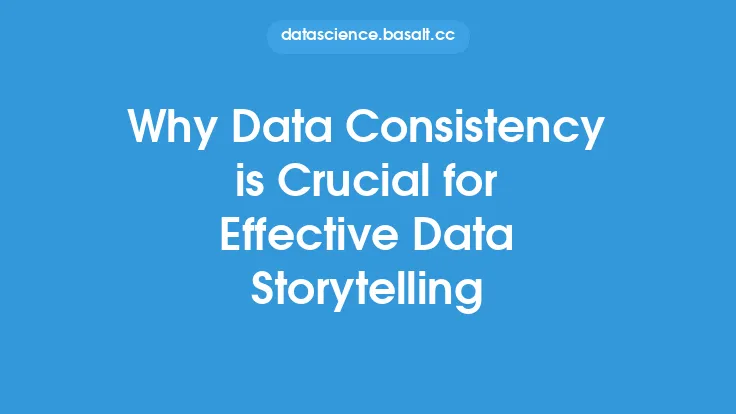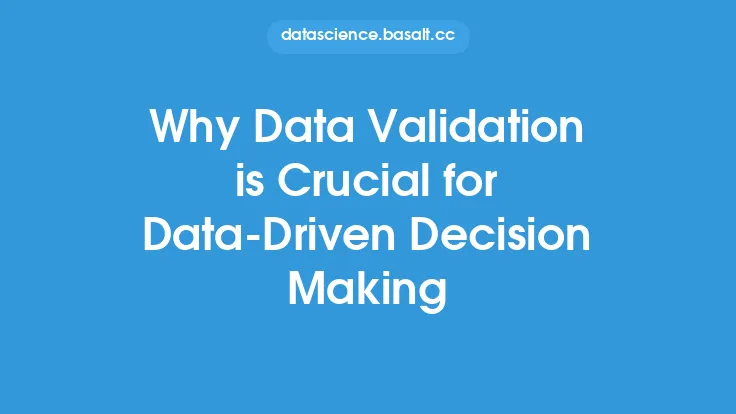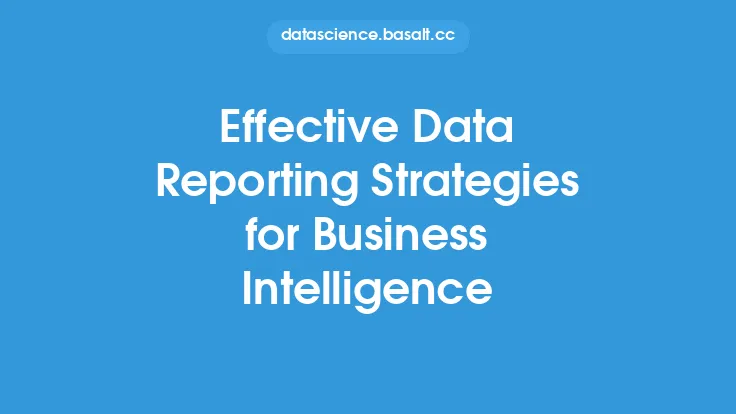Data transformation is a critical step in the data mining process, as it enables organizations to convert raw data into a format that is suitable for analysis and insight generation. The primary goal of data transformation is to improve the quality, consistency, and reliability of the data, making it possible to extract valuable insights and patterns that can inform business decisions. In this article, we will delve into the importance of data transformation in data mining, exploring its benefits, techniques, and best practices.
Introduction to Data Transformation
Data transformation involves a series of processes that aim to transform raw data into a more usable and meaningful format. This can include data cleaning, data normalization, data aggregation, and data feature engineering, among others. The transformation process is essential because raw data is often noisy, incomplete, and inconsistent, making it challenging to analyze and extract insights. By transforming the data, organizations can reduce errors, improve data quality, and increase the accuracy of their analysis.
Benefits of Data Transformation
The benefits of data transformation are numerous and significant. Firstly, it enables organizations to improve the accuracy of their analysis by reducing errors and inconsistencies in the data. Secondly, it facilitates the integration of data from multiple sources, making it possible to analyze and extract insights from diverse datasets. Thirdly, data transformation enables organizations to reduce the complexity of their data, making it easier to analyze and understand. Finally, it enables organizations to improve the scalability of their analysis, making it possible to handle large and complex datasets.
Data Transformation Techniques
There are several data transformation techniques that organizations can use to improve the quality and usability of their data. These include:
- Data cleaning: This involves identifying and correcting errors, inconsistencies, and inaccuracies in the data.
- Data normalization: This involves scaling numeric data to a common range, making it easier to compare and analyze.
- Data aggregation: This involves combining data from multiple sources into a single dataset, making it easier to analyze and extract insights.
- Data feature engineering: This involves creating new features or variables from existing ones, making it possible to extract more insights from the data.
- Data transformation using SQL: This involves using SQL queries to transform and manipulate data, making it possible to extract insights and patterns from large datasets.
Best Practices for Data Transformation
To ensure that data transformation is effective, organizations should follow best practices that prioritize data quality, consistency, and reliability. These include:
- Developing a clear understanding of the data and its limitations
- Using data validation and data quality checks to ensure accuracy and consistency
- Documenting data transformation processes and procedures
- Using data transformation tools and techniques that are scalable and efficient
- Continuously monitoring and evaluating data transformation processes to ensure they are effective and efficient
Challenges and Limitations of Data Transformation
While data transformation is a critical step in the data mining process, it is not without its challenges and limitations. These include:
- Data quality issues: Poor data quality can make it challenging to transform data effectively, leading to errors and inaccuracies in the analysis.
- Data complexity: Complex data can be challenging to transform, requiring specialized skills and expertise.
- Data scalability: Large and complex datasets can be challenging to transform, requiring significant computational resources and expertise.
- Data security: Data transformation can introduce security risks, particularly if sensitive data is being transformed and stored.
Real-World Applications of Data Transformation
Data transformation has numerous real-world applications, including:
- Customer segmentation: Data transformation can be used to segment customers based on their behavior, preferences, and demographics.
- Predictive analytics: Data transformation can be used to build predictive models that forecast customer behavior, sales, and revenue.
- Recommendation systems: Data transformation can be used to build recommendation systems that suggest products and services based on customer behavior and preferences.
- Fraud detection: Data transformation can be used to detect fraudulent activity, such as credit card fraud and identity theft.
Conclusion
In conclusion, data transformation is a critical step in the data mining process, enabling organizations to convert raw data into a format that is suitable for analysis and insight generation. By understanding the benefits, techniques, and best practices of data transformation, organizations can improve the quality, consistency, and reliability of their data, making it possible to extract valuable insights and patterns that can inform business decisions. While data transformation presents several challenges and limitations, its real-world applications are numerous and significant, making it an essential component of any data mining strategy.





